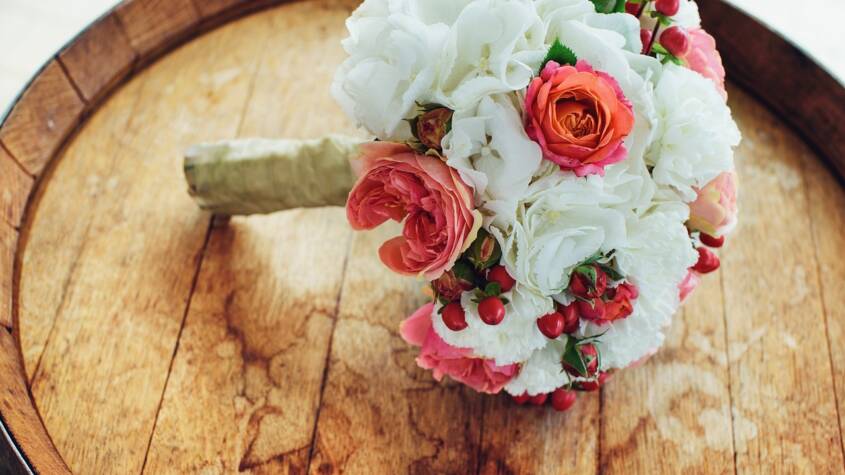
When someone experiences loss, expressing compassion is crucial. A sympathy bouquet serves as a thoughtful gesture that conveys support and comfort during challenging times. These bouquets typically consist of serene flowers like lilies or chrysanthemums, symbolizing peace and remembrance.
Selecting the best flowers can offer solace to the grieving, making the choice of a sympathy bouquet significant. The arrangement should reflect the relationship between the sender and the recipient, enhancing the message of empathy.
Understanding the meaning behind various flowers can guide individuals in crafting a more personal and meaningful tribute. This ensures that the gift not only brings beauty but also resonates with heartfelt sentiments.
Understanding Sympathy Bouquets
Sympathy bouquets serve as an expression of compassion and support during times of grief. They offer comfort and convey heartfelt condolences to those experiencing loss. The choice of flowers and their meanings enrich this symbolic gesture.
Significance of Flowers in Bereavement
Flowers have long been associated with human emotions and milestones. In bereavement, they symbolize compassion and love. Certain flowers convey specific sentiments, providing comfort to grieving families.
Sending flowers demonstrates empathy and support. It allows the sender to express feelings that may be difficult to articulate in words. Family and friends often appreciate the gesture, feeling connected even in sadness.
Additionally, floral arrangements can contribute to the healing process. They create a serene environment, reminding those in mourning of the beauty of life and the memories shared with the deceased.
Common Flowers and Their Meanings
Different flowers carry distinct meanings that can enhance the sentiment of sympathy bouquets. Common choices include:
- Lilies: Represent purity and eternal life.
- Roses: Signify love; red for love, white for purity.
- Chrysanthemums: Symbolize support, often used in funerals.
- Carnations: Express a love that endures; pink for remembrance.
Each flower can evoke particular emotions, providing solace to grieving individuals.
Selecting the right combination of flowers can reflect the unique relationship with the deceased. It helps communicate the feelings and memories that words may struggle to express. Understanding these meanings can guide thoughtful selection for a sympathy bouquet.
Selecting and Sending Sympathy Bouquets
When selecting and sending sympathy bouquets, it is essential to consider the recipient’s preferences and the circumstances. This guide will cover important aspects of choosing the right bouquet, the etiquette surrounding delivery, and personalization options.
Choosing the Right Bouquet
Selecting the appropriate bouquet depends on the relationship with the deceased and the emotional tone intended. Common flowers used in sympathy arrangements include lilies, roses, and chrysanthemums, each conveying different meanings. Lilies express purity and majesty, while roses signify love and remembrance.
When creating a bouquet, consider color choices as well. Soft shades like white or pastel colors evoke serenity. Darker shades, such as deep reds or purples, can imply a more somber mood.
In addition, size matters. A larger arrangement can be suitable for a funeral service, whereas a smaller bouquet may be appropriate for a grieving family at home.
Etiquette for Delivering Sympathy Flowers
Understanding floral delivery etiquette ensures that flowers convey the intended message of support. The timing of the delivery is crucial; sending flowers soon after the loss shows immediate support. Flowers should be sent to the home of the grieving family or the funeral home, depending on what is most appropriate.
When addressing the delivery, use formal language, avoiding overly casual phrasing. Include a short note expressing condolences. Avoid lengthy messages, as brevity is often appreciated in such situations.
It is advisable to confirm the funeral details to ensure the flowers arrive on time and at the right location. Lastly, respect any requests for no flowers by considering alternative gestures.
Personalizing Your Sympathy Gift
Personalizing a sympathy bouquet adds a thoughtful touch. Options include adding a handwritten note, selecting specific flower types favored by the deceased, or incorporating personal items like a ribbon or charm that holds special significance.
Including a favorite flower or color not only personalizes the gift but also reflects the deceased’s personality. This personal touch can mean a lot to the bereaved.
Consider pairing the bouquet with a small gift, such as a comforting item or a donation to a charity significant to the deceased. Combining flowers with a thoughtful gesture reinforces support during a difficult time.
Rent Mini Excavator Near Me: Your Guide to Affordable Options and Local Availability
Renting a mini excavator can be a game changer for small construction projects, landscapin…









